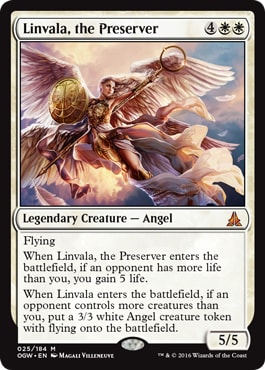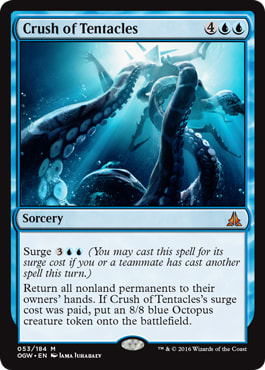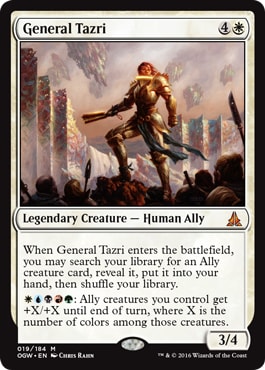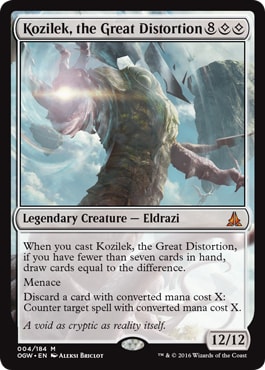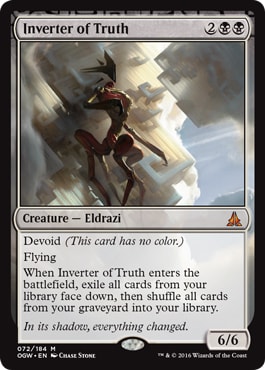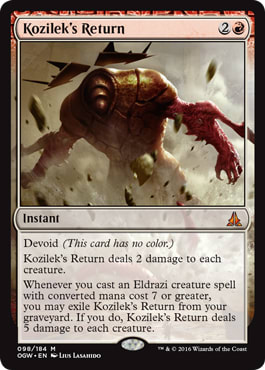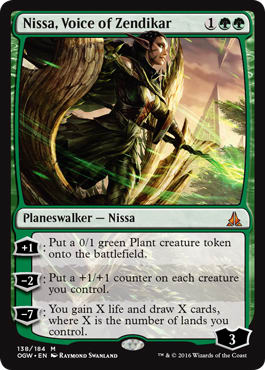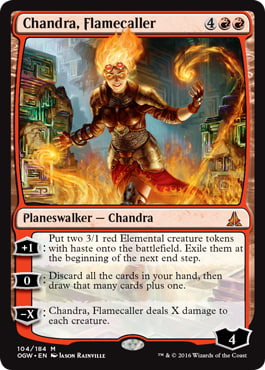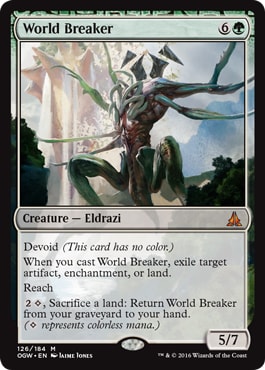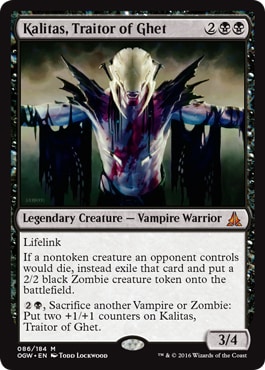Oath of the Gatewatch was a truly wild set for a number of reasons. Following the incredibly lackluster Battle for Zendikar, this set somehow simultaneously managed to continue the trend of dull gameplay while also breaking everything in half. This was because of the low cost eldrazi that could be made even cheaper off of Eye of Ugin and spawned the now infamous Eldrazi Winter. While the set may have been full of misses, the mythics sure weren't, and I'm here to rank them all once again! Ready? Let's jump on in!
Number Twelve
Yup, that sure is a control finisher all right! Many players expected this card to be a seriously dominant force when it came to Standard control lists in the wake of past cards like Aetherling. It did ultimately see some amount of play, but mostly in sideboards. Shortly after release, it only showed up in fringe lists, and when it got a bit more time in the spotlight, it was playing second fiddle to cards like Torrential Gearhulk and Approach of the Second Sun. As such, it was left with little more than a legacy of middling uses.
Number Eleven
When players saw we were getting a new Linvala, there was quite a bit of buzz. The original Linvala - Linvala, Keeper of Silence - was an extremely powerful card that shut down tons of creature decks. So, what did this Linvala do? Well, it helped you stabilize a bit, but only in one-on-one games, and it was often far too costly to take advantage of well. As a result, Linvala only saw play in Standard and was generally left by the wayside everywhere else. She did see a pretty decent amount of play in that format, but again, usually only as singleton sideboard copies.
Number Ten
One interesting element of Oath of the Gatewatch was the surge mechanic, which either gave you a bonus for being your second spell of the turn or playing with a teammate. Crush of Tentacles was designed as the mythic for this mechanic, and it was a pretty great one. Not only could you reset the board, but if you could make the Surge side work it would leave you with a massive beater on your side. The card didn't end up a smash hit, but was a great showcase for the mechanic in a cool design that still had plenty of casual appeal behind it.
Number Nine
General Tazri was, if memory serves, the first of many in a new line of five color Commanders. In this case, that means she was the first legend to have a color identity using all five colors, but as a base card she was only White. This allowed for more versatility in Limited and Constructed play while providing needed aid to Commander to be able to take advantage of her. The card itself ended up being somewhat ho-hum even for an ally commander, and the five color identity on a non-five color card has proved problematic as time has gone on in its own weird ways. Still, novel for the time.
Number Eight
In practice, Mirrorpool isn't a great card. Coming in tapped, not doing much initially besides tapping for colorless mana, and then needing more colorless mana to activate the abilities? It's a pretty tall ask all around. In sheer concept, though, it's far and away one of the most novel cards the set has to offer. Extremely flavorful and quite useful for the right setting, it proved respectably liked among casuals and remains a favorite among those crowds today.
Number Seven
The second in the lineup of the new eldrazi titans brought us this new rendition of Kozilek. The first one was seen for a time as the weakest of the original cycle and that was very much true here as well. The double colorless mana in its casting cost made it far more prohibitive to cast and, as a result, far less desirable. Given this and the whole newness of colorless mana, it wasn't all that well liked when it first came out. Time has been extremely kind to the card, though, and it now remains a Commander favorite, especially in dedicated eldrazi decks.
Number Six
Typically with these mythic rankings, I try to focus much more on how the cards were received when they first release. This takes into consideration what their impact in Standard and Limited was, immediate impact on older formats like Commander, Modern, and Legacy, as well as their lasting reputation today. Inverter of Truth lacks any immediate utility of any kind and was largely laughed at on release for not being all that useful. However, it's really hard to ignore that when the Pioneer format finally came around, this little card broke everything thanks to the release of Thassa's Oracle in Theros: Beyond Death and remains banned as a result to this day.
Number Five
I've talked a lot in this series about overhyped cards during preview season, so let's flip that and instead talk about a tremendously underhyped card in Kozilek's Return. By this time, players were used to seeing Pyroclasm at uncommon, so to see a more expensive one at mythic didn't feel great to many players. What players failed to take into account, though, was just how good an instant speed sweeper really was. Kozilek's Return dominated in its Standard era and became one of the chase mythics of the set in its time, proving that you shouldn't always be quick to write something off before you see it in action.
Number Four
Most Nissa cards tend to revolve around turning lands into creatures, untapping lands, and so on. Nissa, Voice of Zendikar tapped into elements of what those other Nissa cards do and turned them on their heads a bit. Rather than using actual lands, you make plant tokens, and then you buff them up. The ability to make lots of small blockers as well as repeatedly buff your team made Nissa an all-star of her era and she still remains a casual and Cube favorite to this day.
Number Three
These days, this Chandra might not look like much. Most of the effects are great, but are a bit expensive to pull off when the card costs six mana. In Standard, though, Chandra, Flamecaller was hard to beat for the decks that could get her out. First, you'd use her -X to wipe the board. Once the coast was clear, you'd use the +1 to dish out six points of damage a turn. In a pinch, you could also refresh your hand turn after turn to shore up your odds of victory. It only worked this well in its era, but when it was good, Chandra was nigh unstoppable.
Number Two
When Oath of the Gatewatch came out, Mono-Green Tron was one of the best things you could be doing in Modern. The set opened up new possibilities by enabling Eldrazi Tron as a deck, but it also buffered the existing versions of the deck. Case in point is World Breaker, a card that could come down fast and blow up critical pieces to various aspects of your opponents' decks and could be easily brought back if it ever died. This simple utility also made it a great option in Commander decks and Cubes that took advantage of ramp strategies, proving to be a very powerful player in numerous formats, albeit in somewhat narrow ways.
Number One
When you think of the best mythics of a set, Kalitas, Traitor of Ghet probably isn't the sort of card that comes to mind. It's not what you might consider a format defining card and doesn't have quite the iconic status of many of the cards from other releases. What it does have is a tremendously long-standing use as a wide-ranging roleplayer in numerous decks. The card has seen copious amounts of Standard, Modern, Pioneer, Commander, Cube, and even a dash of Legacy. Best of all when it does show up, it's monstrously strong. All of this makes it my pick for the top mythic of the set by a country mile.
Paige Smith
Twitter: @TheMaverickGal
Twitch: twitch.tv/themaverickgirl
YouTube: TheMaverickGal















